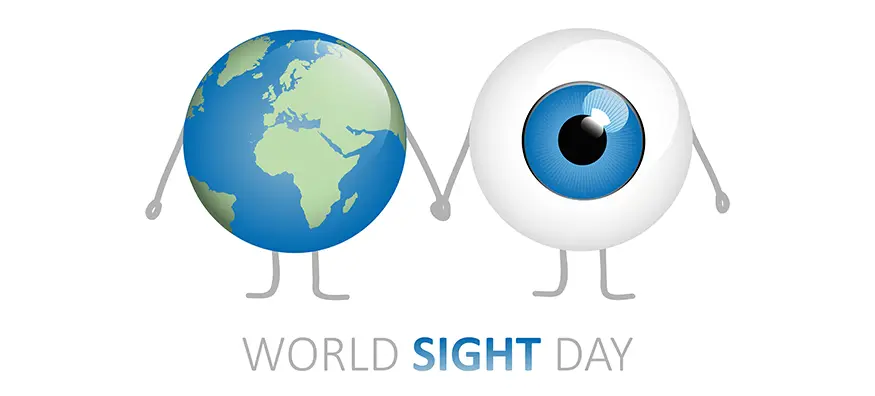
World Sight Day 2025, falling on Thursday, 9th October, is more than just a date on the calendar. It’s a global call to pause, reflect and take proactive steps toward safeguarding our vision. This year’s theme is ‘Love Your Eyes’, and it’s a reminder to put eye health at the forefront of our personal and collective well-being.
Why World Sight Day matters
Observed annually on the second Thursday of October, World Sight Day was first celebrated in 2000 and is now coordinated by the International Agency for the Prevention of Blindness (IAPB) in collaboration with the World Health Organization (WHO). The day unites governments, NGOs, eye-care professionals and communities around one shared mission, ‘making vision care a priority’.
Globally, more than 2.2 billion people live with some form of vision impairment. Did you know nearly 1 billion of these cases could have been prevented or treated with proper care if spotted on time? This is exactly why World Sight Day matters, as it highlights both the urgency of the issue and understanding the immense opportunity to change lives through awareness and action.
Easy tips to follow to ensure better eye health & to truly #LoveYourEyes
Good eye health doesn’t have to be complicated. By adopting a few important habits and following simple eye care tips, you can protect your vision for years to come, such as:
1. Schedule regular eye exams
Accordingly to the NHS, one must visit their optician for an eye test every 2 years. That means regular eye tests are a must for everyone, not just for people who wear prescription glasses or contact lenses. A routine eye check-up can detect early signs of some serious eye conditions such as glaucoma, cataracts, macular degeneration, or diabetic retinopathy. Early detection is key to prevention.
2. Follow the 20-20-20 rule
With screen time at an all-time high, digital eye strain is common, and following the 20-20-20 rule can help reduce that strain. Every 20 minutes, look at something 20 feet away for at least 20 seconds. This relaxes the focusing muscles in your eyes and can help reduce eye fatigue.
3. Wear UV-blocking sunglasses
Harmful UV rays accelerate the risk of cataracts and even eye cancers. Choose sunglasses that block 100% of UVA and UVB rays. It’s important to wear sunglasses all year round, even on cloudy days.
4. Eat a healthy diet
Food rich in antioxidants and vitamins can support long-term eye health. Include food with Vitamin A, C and E, such as carrots, oranges and spinach. The NHS states that consuming food like green, leafy vegetables and oily fish contains excellent nutrients, which can help reduce age-related eye problems.
5. Manage your overall health
High blood pressure, cholesterol and diabetes can damage blood vessels in the eyes, leading to vision loss. Lifestyle management, such as regular exercise and a balanced diet, can help prevent various vision complications like diabetic retinopathy.
6. Quit smoking
Smoking doubles the risk of cataract and significantly raises the chances of age-related macular degeneration. It also reduces blood flow to the optic nerve, damaging vision over time. Quitting smoking is one of the best things you can do for your eyes and overall health.
7. Use protective eyewear
Whether you’re playing sports or gardening, ensure to protect your eyes from injuries. Safety glasses or goggles can prevent serious accidents like corneal scratches or chemical burns.
8. Adjust screens and lighting
Optimise your digital devices and their positions to minimise eye strain. Keep your monitor or mobile approximately an arm's length away. Ensure the lighting in your workspace is neither too dim nor excessively bright compared to your screen. If you spend extended periods in front of screens, consider using blue light filter glasses which may help with digital eye strain.
9. Stay hydrated and keep your eyes lubricated
Dehydration and prolonged screen use can lead to dry eyes. Drink plenty of water and, if needed, use lubricating eye drops or artificial tears. Lastly, blinking more often when using devices is a natural remedy to help distribute natural moisture keeping your eyes hydrated.




















